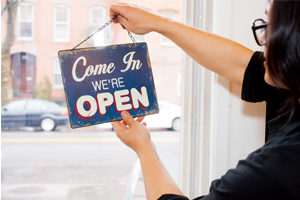What “Mom and Pop” Can Teach The Technology Age
Mom-and-pop businesses are slowly becoming a nostalgic memory. Thirty years ago, small  businesses were the backbone of most communities in towns and smaller cities all across America. From the local grocery store to the barbershop, the entrepreneurial spirit was alive and well, with very few franchises or large corporations. Although mom-and-pop businesses may be dwindling in numbers, today’s small businesses can still learn a lot from their predecessors, especially when it comes to customer service.
businesses were the backbone of most communities in towns and smaller cities all across America. From the local grocery store to the barbershop, the entrepreneurial spirit was alive and well, with very few franchises or large corporations. Although mom-and-pop businesses may be dwindling in numbers, today’s small businesses can still learn a lot from their predecessors, especially when it comes to customer service.
Back when customer service was king
Many people grew up knowing the owners of their frequently visited local businesses. There was no vapid or fake attempt to build rapport with customers; everyone was greeted with a friendly smile and treated with respect. To succeed, these business owners knew that they had to keep their customers happy, or they would not return. Customer service was key — not just a tagline on a poster in the break room.
Think back to that one store in your town that was the epitome of a mom-and-pop business. It may have been a tiny convenience store with two old gas pumps out front or a small family market in your neighborhood. The prices were higher than the larger stores, yet the spot always had customers because they went out of their way to accomplish the little things, such as ordering specific products for their regulars.
What is astounding is how small of a role marketing played into the success of mom-and-pop businesses. Word of mouth was truly the be all, end all of marketing. There was no Yelp or social media to spread the word, only a friend, family member or neighbor to let you know about the best places to frequent, proving the importance of top-notch customer service. One bad customer experience could spread across town surprisingly fast, considering there was no internet to perpetuate the message.
A rearview mirror for today’s SMBs
Running a small-to-medium business is very different today than it was 30 years ago. The competition is fierce between large corporations, online shopping, and mass media marketing all vying for customers’ attention. To be successful, you must embrace technology and the tools that can help a smaller business compete against the wide array of rivals. However, you can still learn a thing or two from those mom-and-pop businesses.
Differentiation is a term that is widely used yet seldom applied. It is what made that one mom-and-pop store in your town so popular. They differentiated their business by treating people like guests and making sure that even the smallest requests were met. All these small but important details are what separated them from their competition.
To differentiate your company, get back to what is really important: the customer. Whether you have a brick-and-mortar business or a virtual enterprise, you can apply the concept of putting the customer first into action. Make it more than just a mantra or catch phrase. Hire and train a team that is willing to make your customers feel like welcomed guests instead of just another sale. Make use of technology to personalize your interactions and deliver what your customers are asking for even faster than before. Various innovations in the digital realm now provide you with the real-time data you need to help build, strengthen, and maintain customer relationships.
Taking this fundamental advice from successful mom-and-pop businesses of the past and using new tools available today, such as social media marketing and analysis, can help improve the customer experience. Combining old-fashioned ideals with modern-day technology can help differentiate your company and establish it as a business leader of the future.